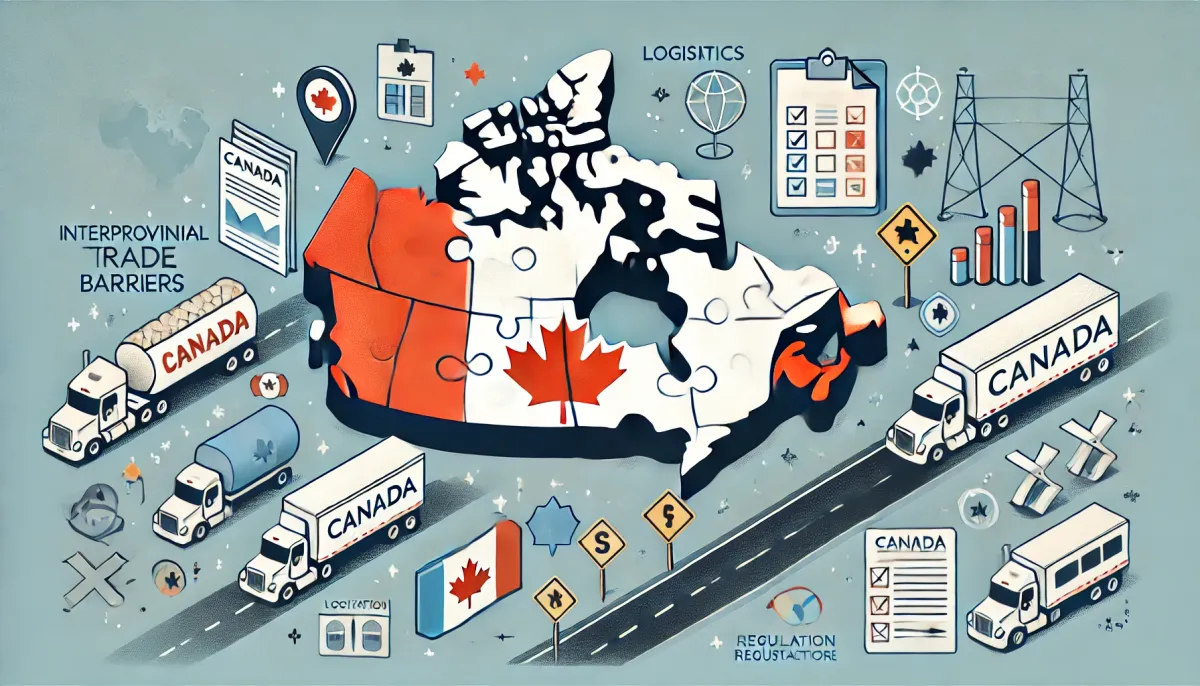
As a Canadian business professional, I've come to appreciate how interconnected—and yet how complex—our country's economy truly is. Interprovincial trade barriers are a reality many Canadian businesses face, presenting significant challenges that can restrict growth, innovation, and competitiveness. Although Canada is one unified nation, internal economic barriers often make trading across provincial borders unexpectedly cumbersome. Understanding these barriers, why they exist, and how to effectively navigate around or through them is essential for Canadian businesses looking to expand their domestic market reach.
One of the primary barriers businesses encounter is the patchwork of regulations, standards, and licensing requirements that vary significantly from province to province. Regulations intended to protect consumers and maintain safety can inadvertently create friction for companies seeking to scale operations nationally. For instance, variations in labeling requirements, certification processes, and professional accreditation mean that a business product or service seamlessly accepted in one province may face additional scrutiny—or even outright rejection—in another.
Another barrier is procurement policies and local preference initiatives that favor in-province businesses over those from other provinces. These protectionist practices, while intended to stimulate local economies, can disadvantage businesses from elsewhere in Canada, limiting their ability to fairly compete for contracts. Furthermore, differing provincial taxation regimes and sales taxes (PST, GST, HST) complicate pricing structures, leading to increased administrative burdens and potential pricing inconsistencies that businesses must carefully manage.
Infrastructure limitations and logistical challenges also contribute to interprovincial trade friction. For businesses involved in manufacturing or distribution, provincial variations in transportation regulations, road infrastructure quality, and freight-handling capacity can drastically affect efficiency and cost-effectiveness. This uneven logistical landscape can make it challenging for businesses to confidently invest in expanding their operations across multiple provinces.
Addressing these barriers requires both strategic and operational considerations. From my perspective, navigating interprovincial trade effectively begins with a proactive approach to understanding each province's unique regulatory and business environment. It is essential for businesses to conduct thorough regulatory and market research early in the expansion process, ensuring compliance and preparedness for potential hurdles. Leveraging trade associations, industry groups, and professional networks can also provide invaluable insight, advocacy support, and practical advice to manage and mitigate interprovincial trade barriers.
Another crucial strategy is engaging in active dialogue with government stakeholders and regulatory bodies. Canadian businesses and industry groups must work collaboratively with policymakers to advocate for harmonization and simplification of regulations and standards. Participating actively in consultations and policy discussions can influence positive regulatory changes and reduce internal economic barriers that currently hamper domestic market integration.
Furthermore, adopting technological solutions to streamline administrative processes can significantly alleviate the operational burdens of interprovincial trade. Advanced software and cloud-based systems that centralize compliance, logistics, accounting, and taxation documentation can help businesses operate more efficiently across provincial borders, ensuring accurate reporting and simplifying regulatory compliance.
Ultimately, overcoming Canada's interprovincial trade barriers demands collaboration among businesses, industry organizations, and governments. While challenges exist, opportunities for enhanced cooperation and regulatory harmonization present themselves as tangible steps toward creating a more unified, cohesive national market. By proactively understanding, addressing, and advocating for solutions to these internal barriers, Canadian businesses can unlock significant growth opportunities and strengthen their competitive position both domestically and internationally.
_____________________________________________________
Jenny is a business insurance broker with Waypoint Insurance. She can be reached at 604-317-6755 or jhansen@waypoint.ca. Connect with Jenny on LinkedIn at https://www.linkedin.com/in/jenny-holly-hansen-365b691b/. Connect with Jenny at BlueSky: https://bsky.app/profile/jennyhollyhansen.bsky.social
Jenny Holly Hansen is a cohost with Chris Sturges of the Langley Impact Networking Group. You are welcome to join us on Thursday’s from 4pm to 6pm at: Sidebar Bar and Grill: 100b - 20018 83A Avenue, Langley, BC V2Y 3R4
Tags: #Jenny Holly Hansen #Interprovinical Trade #Economic Barriers #Regulations #Licensing Requirements

